JVC, or Japan Victor Company, isn’t a name that first comes to mind when you think of hard drives. Well, back in the early 90’s JVC did have a sizable presence in the 2.5″ sector, with the JDE2042M10-1 being one of many models in the ranks. The majority of JVC’s drives would be rather specialist, pushing form factor boundaries in attempts to appeal to OEM’s wanting a “cutting-edge” format.
Looking back, JVC drives are quite fascinating, so having a closer inspection is a special treat.

Drive Attributes ------------------------------------- JVC JDE2042M10-1 ------------------------------------- Capacity 40MB Mfc Date 1992-04-15 Format 2.5" Height 12.5mm Interface PATA Platters 1 Heads 2 Cache 32KB RPM 3400 CHS 973/2/43 Origin Japan (JVC) -------------------------------------
This unit features only a single platter, which shouldn’t be a surprise given that this drive dates from early 1992 & is only 12.5mm thick. For the time period, 19mm drives were commonplace, but 12.5mm drives were certainly starting to pick up steam.
Toshiba & IBM were JVC’s largest competitors at the time in this drive height segment, with the JDE2042M10-1 being a low capacity option for this release period.

The label dictates that this drive was manufactured in Tokyo, Japan, by JVC.
Aside from that, the label provides no capacity information, spindle speed, date of manufacture or anything an end-user would actually like to know.
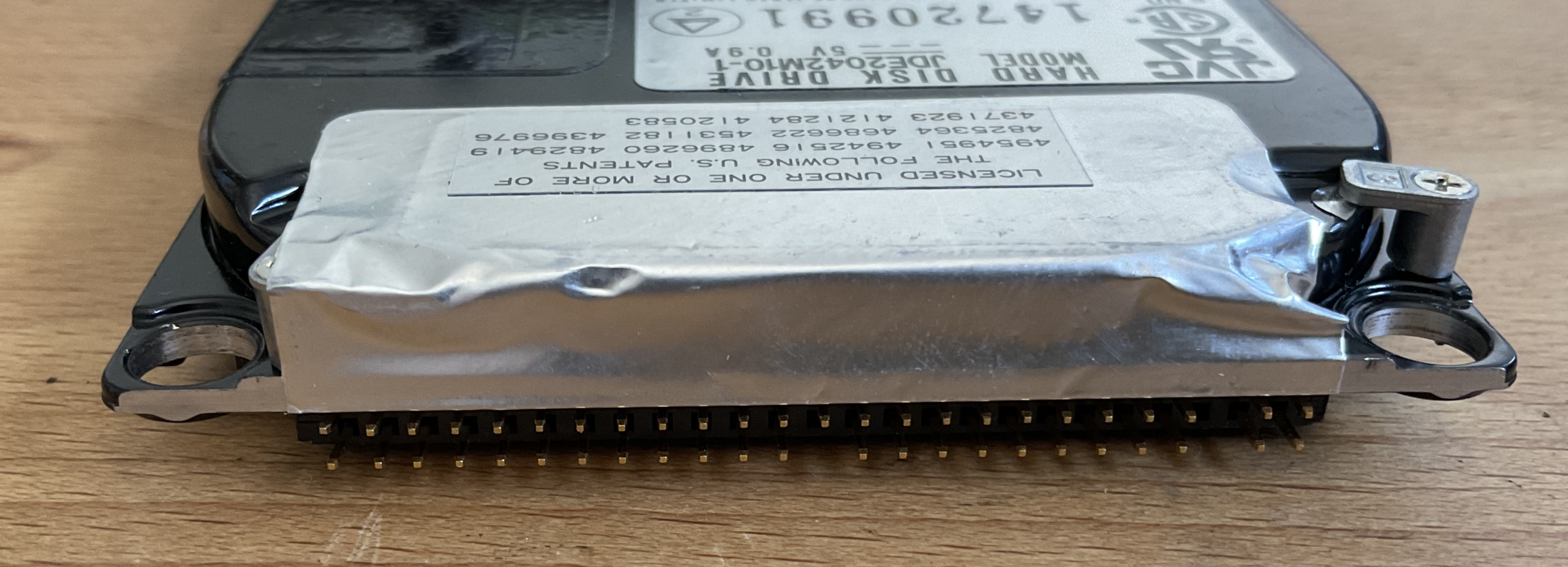
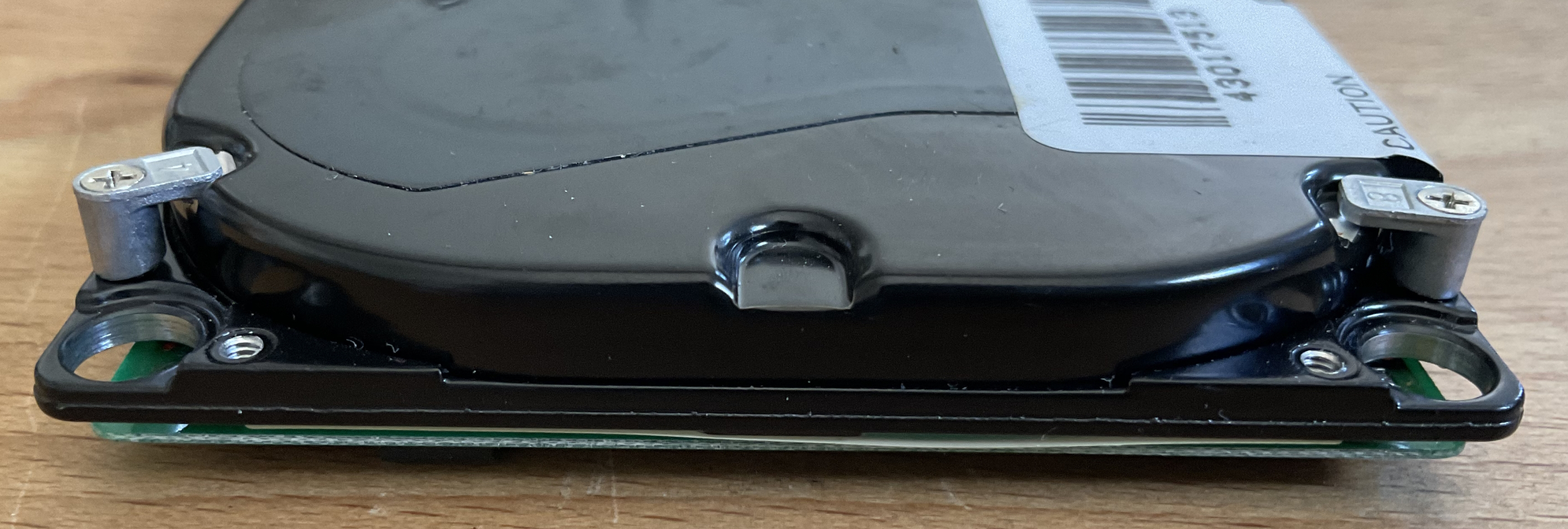

The rear of this drive is pleasant, with components facing outwards. This isn’t unusual for the period, particularly for a 12.5mm drive like this.
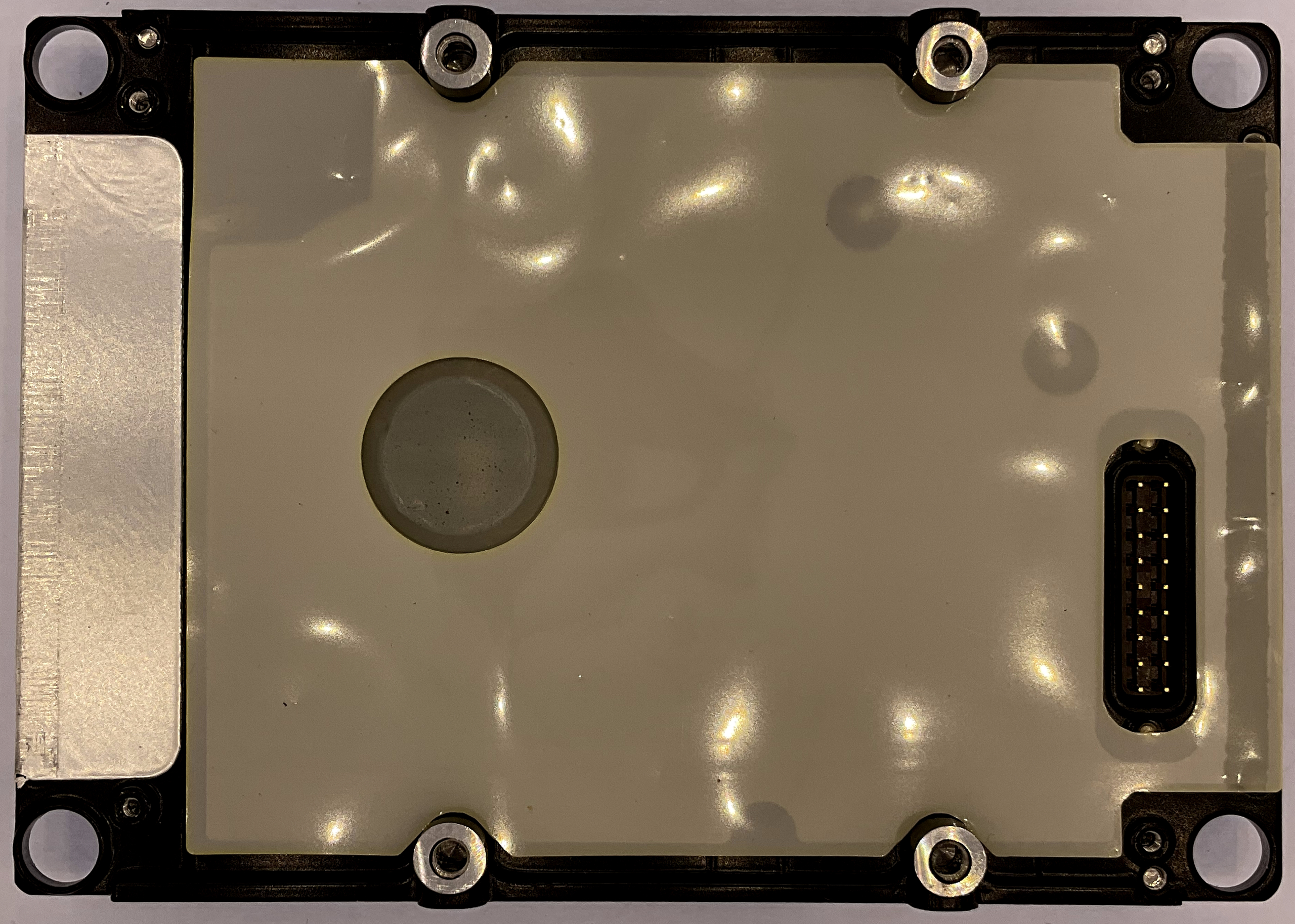

Beneath a thin later of seperation material, the base of the drive is revealed. Unfortunately, it’s not very interesting & the spindle motor manufacturer is not made known.
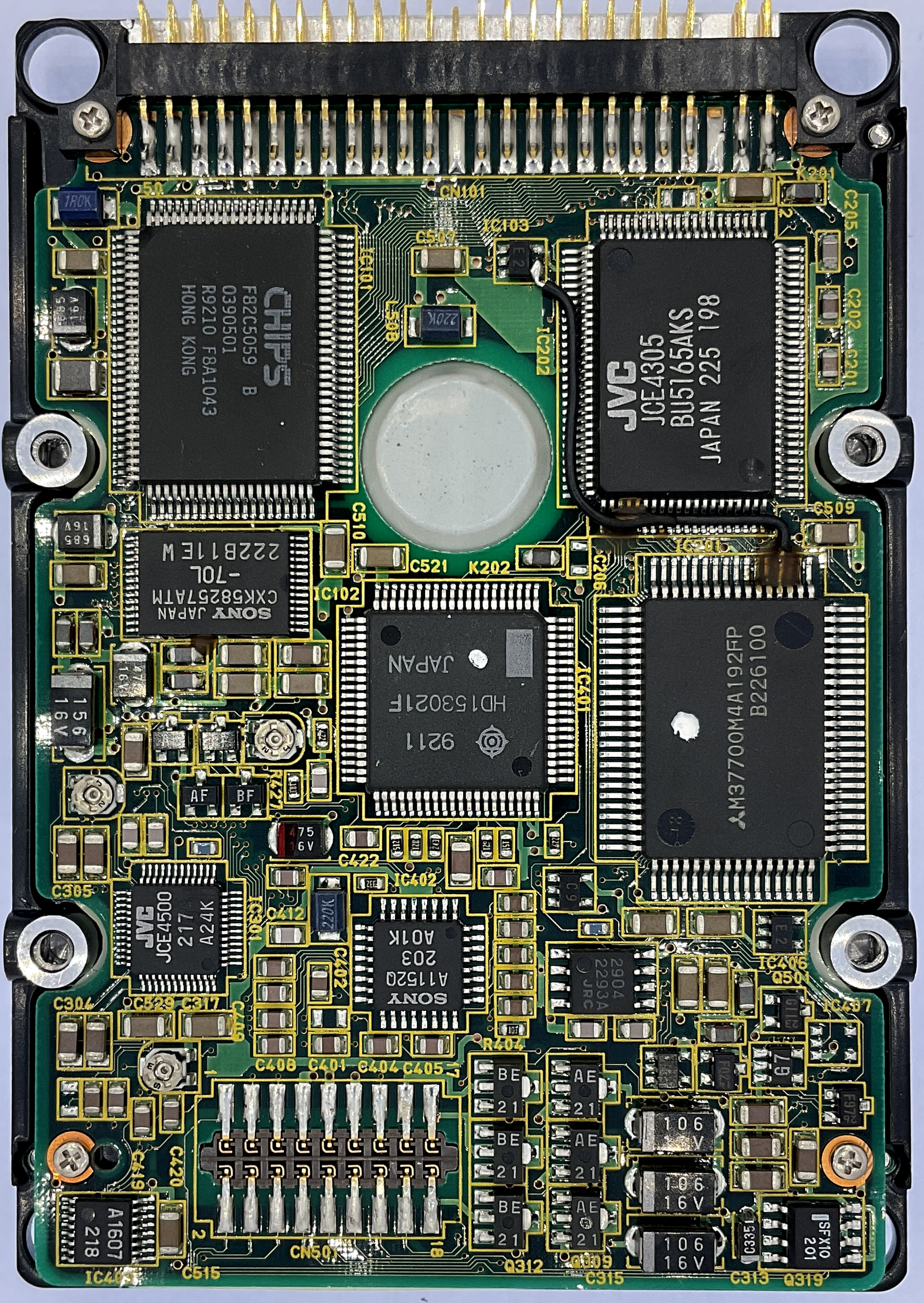
The IC choices on this drive are fascinating and provide a few chip manufacturers that certainly aren’t common to see on other drives from the same period. Particularly, the AT disk controller from Chips & Technologies (82C5059) is quite an interesting choice, with a full breakdown available here. The two JVC branded chips is another surprise, but perhaps shouldn’t be a massive shock given they had a small presence in the mobile computing market when concerning logic design & production at the time.
The other chips are fairly common options to find in the wild, with the spindle motor controller being provided by Hitachi & the 32KB of cache being from Sony.

The rear of this drive’s PCB features more beautifully yellow silkscreen, reminiscent of Toshiba’s drives from the same period.

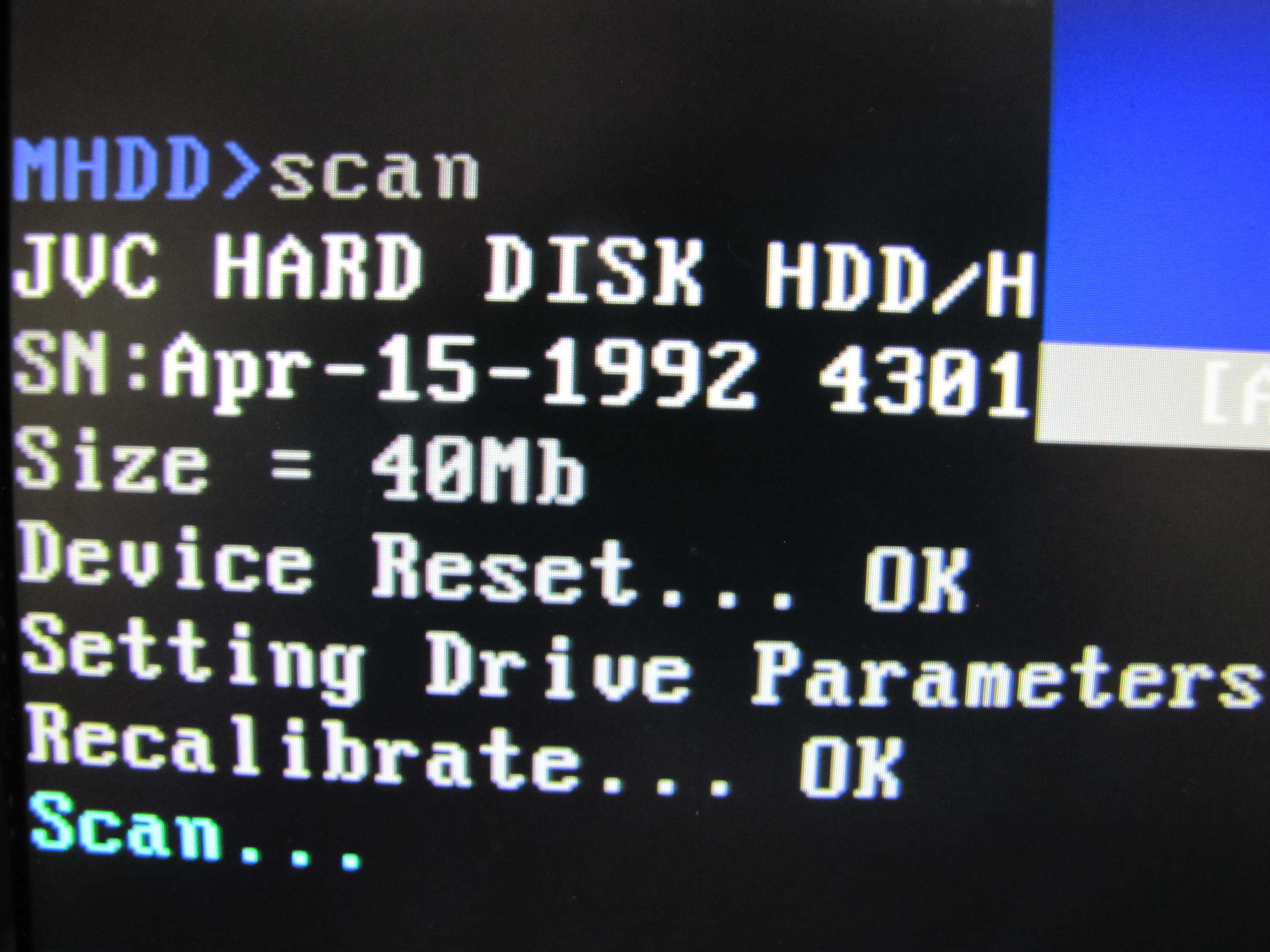
Those may have noticed so far that no date codes of any kind were available, so how was such a pin-point date of manufacture obtained? Luckily, polling this drive’s serial number produces the full date of manufacture before providing the S/N itself. Super handy!
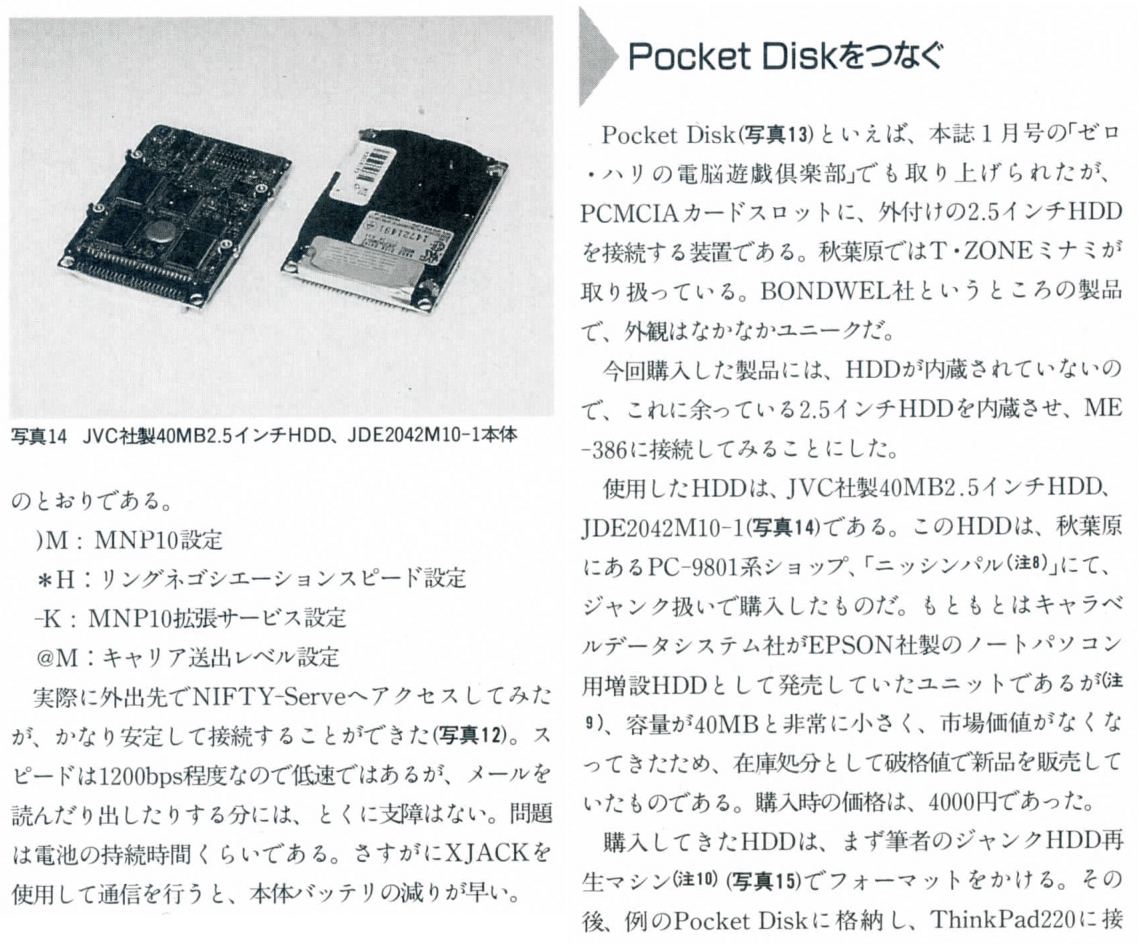
Translation:
“…the product I purchased this time does not have a built-in hard disk drive, so I decided to integrate a surplus 2.5” drive and connect it using the ME-386 [note: the ME-386 is referred to earlier in this text, being a PCMCIA card slot adapter, allowing a 2.5″ hard drive to be connected to a machine externally].
The HDD used is JVC’s 40MB 2.5″ inch hard drive, the JDE2042M10-1 (Photo 14). This drive was purchased as junk [note: junk in Japanese sales may refer to broken, useless, dirty, obsolete or untested, it does not necessarily mean it’s worthless/faulty] at the PC-9801 series shop “Nisshinpal” in Akihabara. This unit was originally sold by Caravel Data Systems as an additional hard disk drive for EPSON notebook computers, but its capacity was so small at 40MB that it had lost all market value, so it had to be disposed of. It was sold as a new product at an exceptional price of only 4000 yen at the time of purchase. [note: 4000 JPY = ~$28USD/~€26EUR/~£22GBP as of 2023-07-10]
First, I formatted the purchased drive using my junk hard disk drive playback machine [note: referred to earlier in the text, view reference for full context]. After that, I stored it in the example Pocket Disk [note: referring to the aforementioned ME-386] and connected it to a ThinkPad 220.”
Clearly the sun didn’t always shine for JVC, with these units quickly entering a low-end segment as capacities boomed throughout the industry. What was once a viable business for the company became, like many other manufacturers from the time, perhaps lost its weight after requiring so much effort for little reward.
Nonetheless, JVC were one of the many parts of the past that had an influence on the drives we all use today.
If you missed the video I made on this drive, you can find it here:
References:
[1] Funky Goods by Toshiro Hata (1995),[波多利朗の Funky Goods], March 1995, “Various Connections to the ME-386 Palmtop Computer” [パームトップパソコン ME-386に いろいろつなぐ],7 pages, page 5, right column, Toshiro Hata, Studio Pooh & Catty, Acquired from: https://funkygoods.com/cyosaku/funky_goods/1995_03/me-386-01.pdf
For additional information, please visit https://funkygoods.com/.